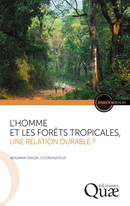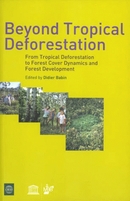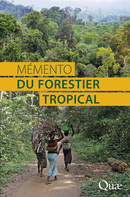Towards an interdisciplinary approach on ancient forests
Ancient and old-growth forests: definitions and main conservation issues
Investigating past forest management legacies of current ancient forests
Investigating past forest trajectories: from pluridisciplinarity to interdisciplinarity
“Into the Woods” international conference: advancing interdisciplinarity
References
Part 1: Perception and management of ancient forests as a natural and cultural heritage
Chapter 1: Distinguishing the definition and meaning of ancient woodland in England
Chapter 2: Managing Walloon ancient woodlands as heritage
Chapter 3: Ancient coppice woodlands in the Czech Republic
Chapter 4: How the ancient forest concepte merged in the French media
Chapter 5: Mediterranean forest users and ancient forests: appreciating nature as a social and welcoming place rather than wilderness
Part 2: Investigating forest ancientness: advocating for interdisciplinarity
Chapter 6: A toolbox to identify and characterize ancient forests in the French Massif Central
Chapter 7: On the ecology of ancient and recent woodlands: the role of the historical approach
Chapter 8: Ancient forest and old-growth forest from the perspective of medieval and modern written sources. The case of the‘Bois de la Sainte-Baume’ (France, AD late 13th to early 19th centuries)
Chapter 9: Using a dendrochronological and archaeological approach to understand timber uses and ancient forest managementin the southern French Alps over the last millennium
Chapter 10: Long-term forest evolution and woodland uses in an ancient charcoal-production forest of the eastern French Pyrenees: an interdisciplinary approach at high spatio-temporal resolution
Part 3: “At the edge of the forest”: other ways to think about ancient and old-growth forests
Chapter 11: The ‘recent’ forests of Mount Venda (Padua, Italy): when historical cartography and archaeobotany tell quite a different story
Chapter 13: Rejuvenating the elderly and agingthe youngsters: ancient management practices in continuously renewed native ash tree forests in the High Atlas of Morocco
Chapter 13: The ancient forests of the Argentinean Pampas: challenging old paradigms about a treeless landscape
Chapter 14: Root and branch: a community archaeology and palaeoecology approach to the investigation of a submerged forest at Pett Level, Sussex, UK
Conclusions- Reflections on interdisciplinarity in the social and natural sciences from the perspective of disciplinary frontiers in the face of a complex reality
Forests: construction between nature and society
Symbolism of the frontiers and dialogue between disciplines
References
List of authors



















